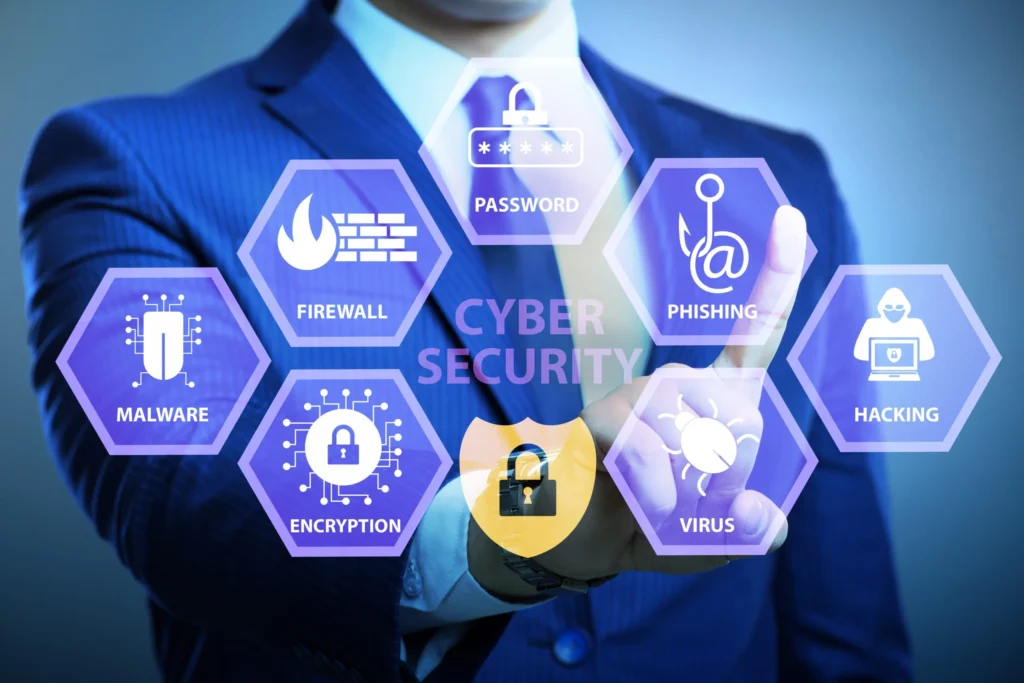In today’s digital age, cybersecurity threats are becoming increasingly prevalent and sophisticated. It is essential for individuals and organizations to be aware of the top cybersecurity threats and how to protect themselves against these risks. From phishing attacks to ransomware, cybercriminals are constantly finding new ways to exploit vulnerabilities in systems and networks. Therefore, it is crucial to stay informed and implement robust security measures to safeguard sensitive information and data. By understanding the nature of these threats and taking proactive steps, individuals can mitigate the risk of falling victim to cyberattacks and ensure their digital safety.
As the digital landscape continues to evolve, individuals and organizations are also faced with an array of alternative cybersecurity challenges. These may include malware, social engineering, data breaches, and insider threats. It is imperative to stay vigilant and employ a multi-faceted approach to cybersecurity, including regular system updates, strong encryption, employee training, and the use of advanced security tools. By staying informed about these emerging threats and adopting a proactive mindset, individuals can effectively protect themselves from potential cyber risks and maintain a secure digital environment.
1. Malware Attacks
Malware, short for malicious software, is a broad category of software designed to infiltrate or damage a computer system without the owner’s informed consent. This can include viruses, worms, trojan horses, ransomware, spyware, and adware. Malware attacks can occur through email attachments, malicious websites, or infected software. Once a device is infected, the malware can steal sensitive information, disrupt normal operations, or even take control of the system.
To protect yourself from malware attacks, it’s important to regularly update your operating system and software to patch any vulnerabilities that could be exploited by malware. Additionally, install and regularly update antivirus and antimalware software to detect and remove any malicious programs. Be cautious when clicking on links or downloading attachments from unknown or suspicious sources, and consider using a firewall to monitor and block incoming threats.
2. Phishing Scams
Phishing is a type of cyber attack that involves tricking individuals into providing sensitive information such as passwords, usernames, and credit card details. This is often done through deceptive emails, fake websites, or fraudulent text messages that appear to be from legitimate organizations. Phishing scams can lead to identity theft, financial loss, and unauthorized access to personal accounts.
To protect yourself from phishing scams, it’s important to be cautious of unsolicited communications that request sensitive information. Verify the authenticity of any requests for personal information by contacting the organization directly using contact information from their official website. Be skeptical of urgent or alarming messages that create a sense of panic or urgency, as these are often tactics used by phishing scammers to manipulate their targets.
3. Ransomware Attacks
Ransomware is a type of malware that encrypts a victim’s files and demands payment in exchange for the decryption key. These attacks can have devastating consequences for individuals and organizations, as they can result in the loss of sensitive data and significant financial costs. Ransomware attacks can occur through malicious email attachments, compromised websites, or vulnerabilities in software and operating systems.
To protect yourself from ransomware attacks, it’s important to regularly back up your data to an external source that is not connected to your main network. This ensures that you can restore your files without having to pay the ransom if you are affected by a ransomware attack. Additionally, be cautious when opening email attachments or clicking on links, and ensure that your operating system and software are regularly updated to patch any vulnerabilities that could be exploited by ransomware.
4. Insider Threats
Insider threats occur when individuals within an organization misuse their access and privileges to compromise the security of the organization. This can include employees, contractors, or business partners who intentionally or unintentionally leak sensitive information, steal intellectual property, or disrupt normal operations. Insider threats can be difficult to detect and prevent, as the individuals involved often have legitimate access to the organization’s systems and data.
To protect against insider threats, organizations can implement strict access controls and monitoring systems to detect any unusual or unauthorized behavior. Conducting regular security training and awareness programs for employees can also help to educate staff about the risks of insider threats and how to report any suspicious activity. It’s also important to regularly review and update access privileges to ensure that employees only have access to the information and systems that are necessary for their roles.
5. DDoS Attacks
A distributed denial-of-service (DDoS) attack is a malicious attempt to disrupt the normal traffic of a targeted server, service, or network by overwhelming it with a flood of internet traffic. This can render the targeted system inaccessible to legitimate users and can result in significant downtime and financial loss for organizations. DDoS attacks are often carried out using a botnet, which is a network of infected devices controlled by the attacker.
To protect against DDoS attacks, organizations can use DDoS mitigation services and solutions that are designed to detect and filter out malicious traffic. Implementing firewalls and intrusion prevention systems can also help to prevent DDoS attacks by filtering out potentially malicious traffic before it reaches the targeted system. It’s also important to have a response plan in place to quickly mitigate the impact of a DDoS attack and restore normal operations.
6. Social Engineering Attacks
Social engineering attacks involve manipulating individuals into performing certain actions or divulging confidential information. This can include techniques such as pretexting, baiting, quid pro quo, and tailgating, and is often used to gain unauthorized access to systems and data. Social engineering attacks can be difficult to detect, as they exploit human psychology and trust to deceive individuals into providing sensitive information or performing actions that compromise security.
To protect against social engineering attacks, it’s important to educate employees and individuals about the tactics used by social engineers and how to recognize and respond to potential threats. Implementing strict access controls and multi-factor authentication can also help to prevent unauthorized access to systems and data, even if an attacker is able to manipulate an individual through social engineering techniques. Regular security training and awareness programs can help to create a security-conscious culture within organizations and reduce the risk of successful social engineering attacks.
7. IoT Vulnerabilities
The Internet of Things (IoT) refers to the network of interconnected devices and objects that are embedded with sensors, software, and other technologies to exchange data with other devices and systems over the internet. IoT devices, such as smart home devices, wearable technology, and industrial sensors, can be vulnerable to cyber attacks if they are not properly secured. This can lead to unauthorized access to personal data, disruption of critical infrastructure, and even physical harm in the case of certain IoT devices.
To protect against IoT vulnerabilities, it’s important to change default passwords on IoT devices and keep their software and firmware updated with the latest security patches. Implementing network segmentation and firewalls can also help to isolate IoT devices from the rest of the network and prevent unauthorized access. Additionally, organizations and manufacturers should prioritize security in the design and development of IoT devices to ensure that they are resistant to cyber attacks.
8. Man-in-the-Middle Attacks
Man-in-the-middle (MitM) attacks occur when a malicious actor intercepts and potentially alters communications between two parties without their knowledge. This can allow the attacker to eavesdrop on sensitive information, such as login credentials and financial details, or to impersonate one of the parties involved in the communication. MitM attacks can occur in both physical and digital environments, and can be difficult to detect without the use of encryption and other security measures.
To protect against man-in-the-middle attacks, it’s important to use encrypted communication channels, such as secure websites (HTTPS) and virtual private networks (VPNs), to prevent attackers from intercepting and reading sensitive information. Implementing strong authentication measures, such as multi-factor authentication, can also help to prevent unauthorized access to accounts and systems even if login credentials are intercepted by an attacker. Regularly monitoring network traffic and using intrusion detection systems can help to detect any suspicious activity that may indicate a potential man-in-the-middle attack.
Top Cybersecurity Threats and How to Protect Yourself
| Threat | Description | Protection |
|---|---|---|
| Malware | Malicious software designed to damage or gain unauthorized access to a computer system. | Use antivirus software, keep systems updated, and be cautious of email attachments. |
| Phishing | Fraudulent attempts to obtain sensitive information by disguising as a trustworthy entity. | Verify the source of emails and websites, and be cautious of providing personal information. |
| Ransomware | Malware that encrypts a user’s data and demands payment for its release. | Regularly backup data, use strong passwords, and be cautious of suspicious links. |
| Insider Threats | Security risks posed by individuals within an organization, such as employees or contractors. | Implement access controls, monitor user activities, and provide cybersecurity training. |
Cybersecurity threats, such as malware, phishing, ransomware, and insider threats, pose significant risks to individuals and organizations. By using antivirus software, being cautious of suspicious emails and websites, regularly backing up data, and implementing access controls, individuals can protect themselves from these threats and minimize the risk of cyber attacks.



